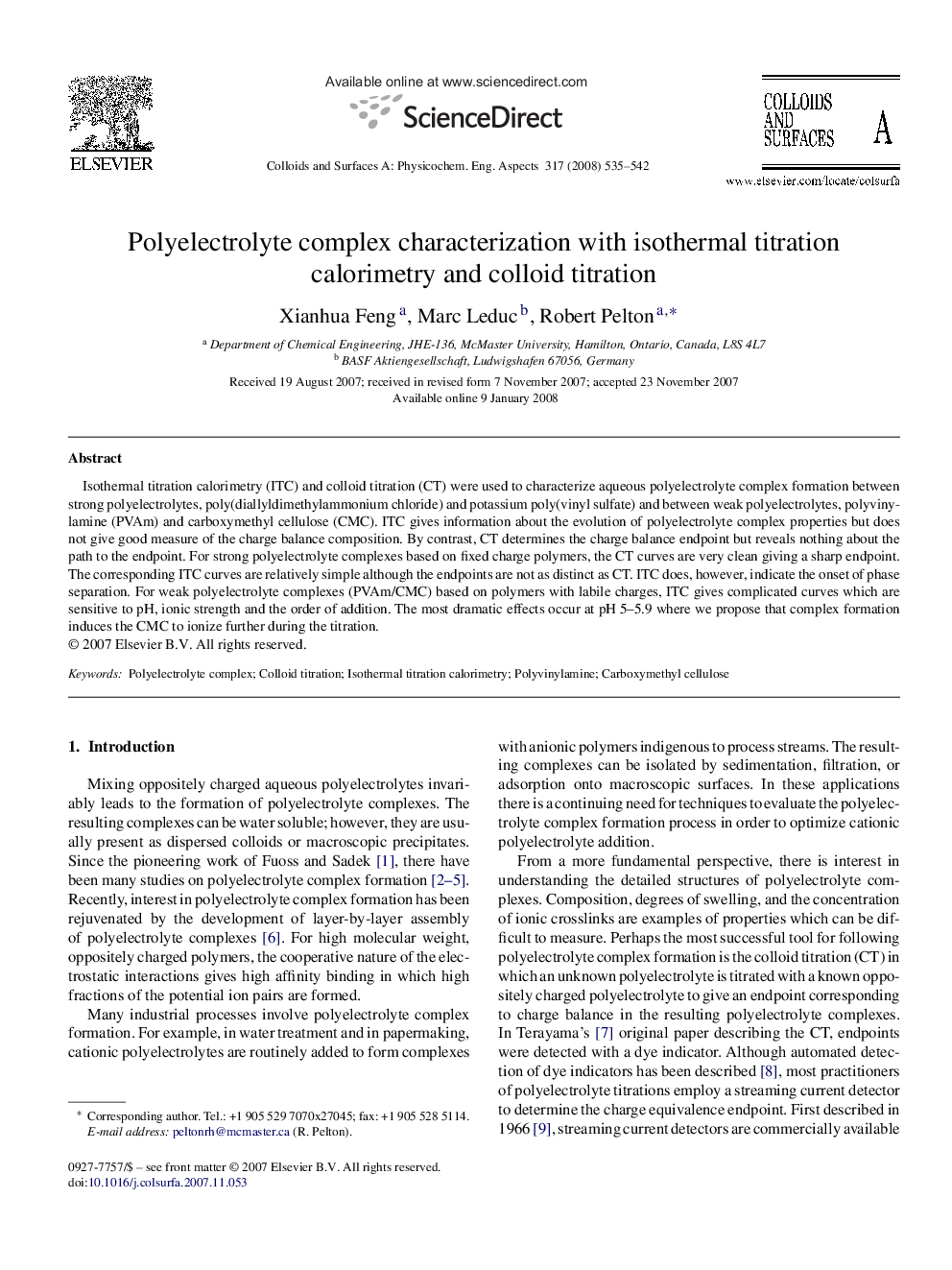| Article ID | Journal | Published Year | Pages | File Type |
|---|---|---|---|---|
| 596836 | Colloids and Surfaces A: Physicochemical and Engineering Aspects | 2008 | 8 Pages |
Isothermal titration calorimetry (ITC) and colloid titration (CT) were used to characterize aqueous polyelectrolyte complex formation between strong polyelectrolytes, poly(diallyldimethylammonium chloride) and potassium poly(vinyl sulfate) and between weak polyelectrolytes, polyvinylamine (PVAm) and carboxymethyl cellulose (CMC). ITC gives information about the evolution of polyelectrolyte complex properties but does not give good measure of the charge balance composition. By contrast, CT determines the charge balance endpoint but reveals nothing about the path to the endpoint. For strong polyelectrolyte complexes based on fixed charge polymers, the CT curves are very clean giving a sharp endpoint. The corresponding ITC curves are relatively simple although the endpoints are not as distinct as CT. ITC does, however, indicate the onset of phase separation. For weak polyelectrolyte complexes (PVAm/CMC) based on polymers with labile charges, ITC gives complicated curves which are sensitive to pH, ionic strength and the order of addition. The most dramatic effects occur at pH 5–5.9 where we propose that complex formation induces the CMC to ionize further during the titration.
